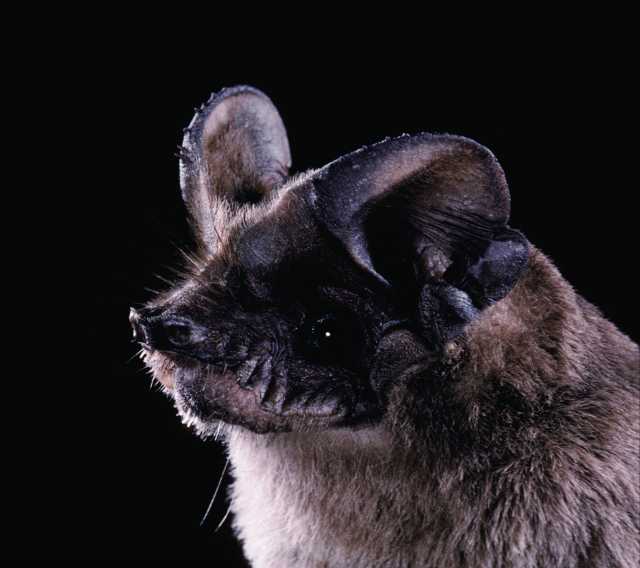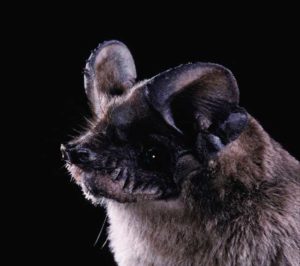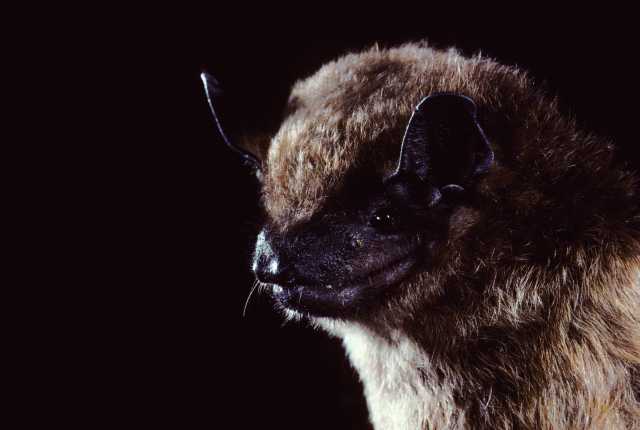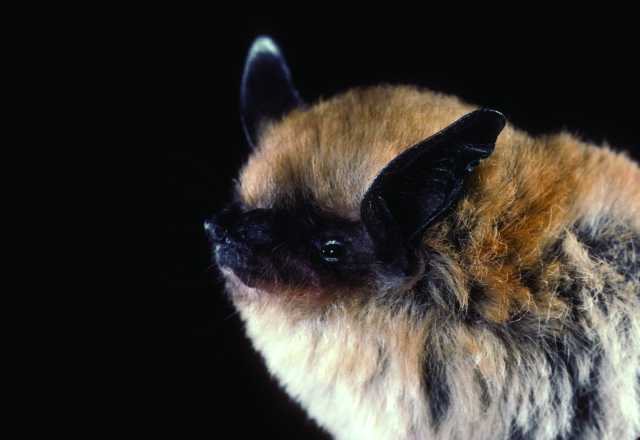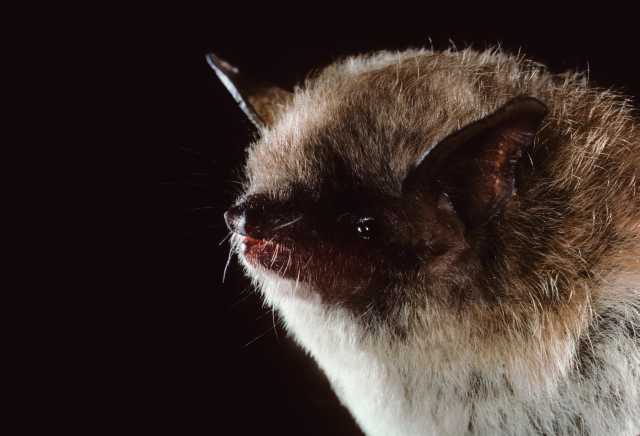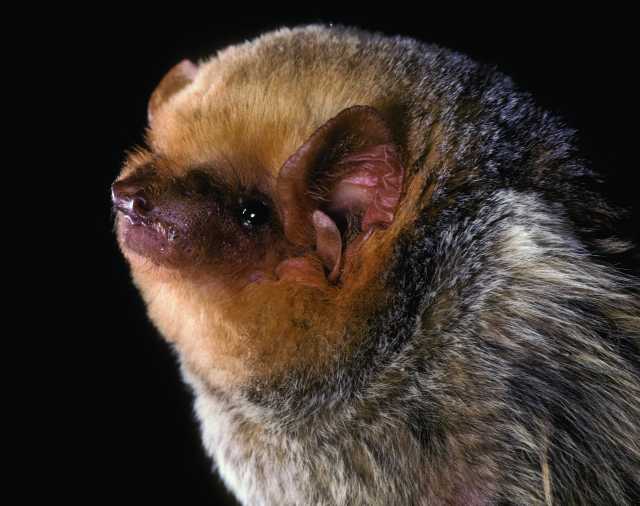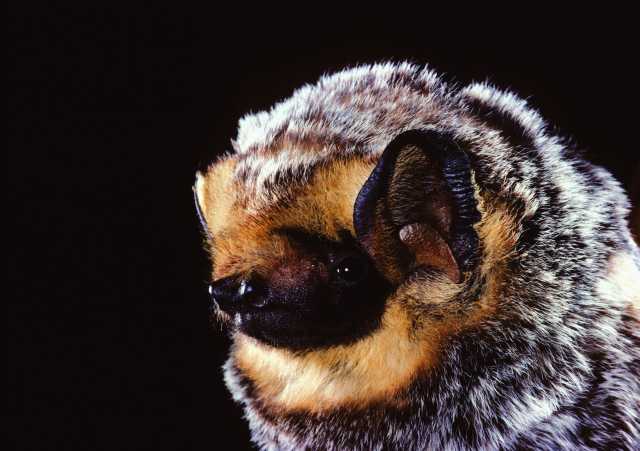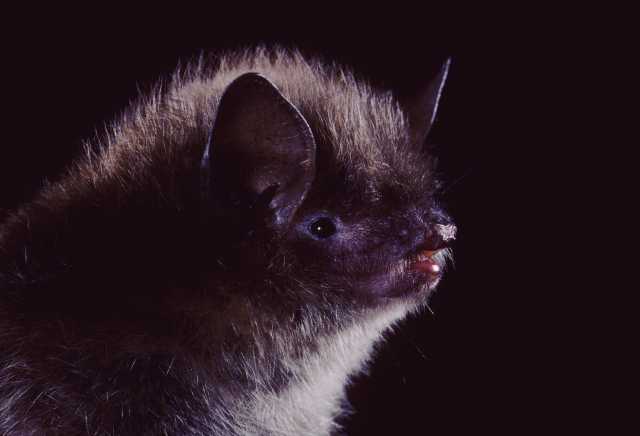Mexican free-tailed bat (Tadarida brasiliensis, also known as the Brazilian free-tailed bat.
Description: Body length about 3.4-4.3″, with a 12-14″ wingspan. The fur is uniformly dark brown or dark grey. The tail extends beyond the tail membrane between hind feet. Long narrow wings provide for fast flight.
Range: Migratory. Found from central North America to northern South America.
Habitat: Form large colonies in caves, buildings, under roof tiles and under bridges.
Diet: Forages mainly on moths and mosquitoes. A farmer’s friend eating moths whose larva eats crops. Feed on migratory moths at very high altitude, up to 10,000 feet. Also eats flying ants, weevils, stink-bugs and ground beetles.
Behavior: Emerge at sunset in columns. Young left in large group. Each mother gives birth to one pup which she finds and nurses among the many young. Able to fly at about 5 weeks. Lifespan about 15 years. Predators include Red-tailed Hawk and other birds of prey, as well as cats and dogs which locate roosts and wait for emergence.
Risks: Colonies once numbering in the millions have been dramatically reduces in size due to human disturbance and habitat destruction of caves as well as problems with pesticide poisoning and deliberate eradication attempts.
Notes:
- Mexican free-tailed bat babies are about 1/3 of mom’s weight at birth. That’s like a human giving birth to a kindergartener!

